Join the discussion below

Dr. Terry Wahls is an Institute for Functional Medicine Certified Practitioner and a board-certified internal medicine physician. She also conducts clinical trials testing the efficacy of diet and lifestyle in the setting of multiple sclerosis. In 2018 she was awarded the Institute for Functional Medicine’s Linus Pauling Award for her... Read More
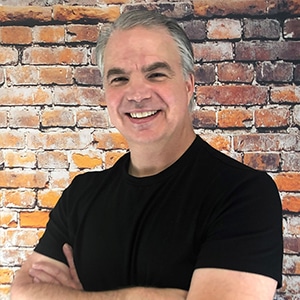
Dr. Goodenowe’s research into the biochemical mechanisms of disease started in 1990. His curiosity about the biochemistry of life is as insatiable today as it was 30 years ago. In those 30 years, Dr. Goodenowe invented and developed advanced diagnostic and bioinformatic technologies, designed and manufactured novel and natural biochemical... Read More
- Myelin, formed and maintained in specific ways, is crucial for nerve health, and plasmalogens play a key role in maintaining myelin integrity
- Mitochondrial insufficiency is a common issue in MS, and strategies to support remyelination can help mitigate this problem
- Understanding the role of plasmalogens in nerve and mitochondrial health can lead to better management of conditions like MS
Related Topics
Aging, Longevity, Mind, Mitochondria, Multiple Sclerosis, Nutrition, Supplements, TreatmentTerry Wahls, MD
Welcome, Dad. I am so glad that you agreed to be part of the summit. I think you have a really interesting insights here. So what I would like to have you do is introduce yourself and explain why you are an expert.
Dayan Goodenowe, PhD
Well, thank you, Dr. Ross. Yeah. So my background is we’re going to talk about multiple sclerosis today. My background is in the biochemical basis of disease and my formal training is in organic chemistry and then in psychiatric mechanisms of disease. So my piece is actually in psychiatric medicine, and I’ve been kind of gotten more and more involved organically over the last 30 years from the biochemical process upwards, looking at advanced mass spectrometry technologies, I invented a technology in the late nineties, early 2000, that allowed me to measure thousands and thousands of biomarkers in blood using ion cyclotron mass spectrometry, which is what we currently use in our facility here in Temecula.
And using that technology, we could measure the comprehensiveness about chemistry, both in the clinical aspects, but also in the preclinical and cell culture world. And using that type of technology, we really understand the biochemical basis of disease and we ourselves, from the symptomatic representation to the causation of these diseases. And so diseases like multiple sclerosis, you know, when you look at these things in greater detail and you move yourself up the causation chain, you end up at the mitochondria. So multiple sclerosis is fundamentally mitochondrial insufficiency disease. And then you have the gender bias based upon the neuroprotective qualities of beta estrogen or beta for diol, which women have and the children young pre puberty. The autism gender bias is the exact opposite of the multiple sclerosis.
Gender bias in your say thirties and forties, and that’s when the estrogen or beat estrogen while protective neuroprotective mechanism starts to fail. And so you’ll see that happen. When women are in the restless cycle, they typically go into remission and when they’re in non estrus and they’ll get worse. And then when we transition from relapsing remitting into secondary progressive, that coincides a lot with menopause. And so these are the things that deal with the mitochondrial basis but it deals with this underlying weakness in most of white matter. And so that’s why women with Ms. or men with their MST have a much higher risk of stroke and other related white matter diseases, not just the movement disorders that are okay.
Terry Wahls, MD
Hang on. So for everyone who’s listening, white matter is what shows up in the MRI as white, why it’s called white matter. But that really is about myelin. And that’s what’s being damaged. But you’re telling us that this is not a myelin problem, but a mitochondria problem. So I’m sure and I’m with you. I completely agree. It’s the mitochondria are the big driver. But I think we need to help our listeners understand why you’re so confident that mitochondria are more important than the myelin, which is what their neurologist has been talking with them about.
Dayan Goodenowe, PhD
Well, the myelin is important. Okay, so so for instance, if you take a look at the human brain, there’s really if you want to get at the simplest structural delineation is you have gray matter, which is your neurological synapse region. So that’s where neurons are connecting with other neurons. And that’s typically on the outer part of your skull. And that’s where you have the maximum surface area where you can have the maximum number of neurological connections. Then you have white matter and white matter is the protective coating on your axons and it’s for the connectivity. And then you have the third type of cells, which are your support cells like your astrocytes, which are like your little, little liver cells that support both your neurons and your myelin. So you have neurons which are your signaling molecules people call gray matter, but they’re always interspersed with that myelin.
And the myelin is what is the protective coating, like the coating that covers a copper wire in your wall, and that is the connectivity. So the corpus callosum, it connects the two hemispheres. Our big fiber bundle is like a bundle of wires. And where axons travel long distance is you have the protective coating and that shows up as white because if it has a well, it’s how the water is tightly bound in myelin. Right. And so what happens in mice is still a demyelinating disease and it’s fundamentally a myelin related issue. But myelin isn’t like your plaster on your walls. Your myelin is a cell. It’s called an all tender site. And the myelin on your axons, if you think of a copper wire and you take a roll of electrician’s tape and you wrap that electrician’s tape around or run around a copper wire to get the protective coating, that’s what myelin is. So myelin is the electrician’s tape being wrapped around.
And when you were born, we’re born versus with no myelin in your brain, the human brain starts myelin eating at about gestational week, 30, around 37 or so. And so in the early thirties, so premature babies. One of the big problems with premature babies is impaired white matter development. So they’ll have what’s called thinning of the corpus callosum and they’ll have delayed development that’s related to their gestational age. Okay. So the gestational age will actually highly predict performance on psychomotor shock test much later, like a year three. So when you’re born, you’re born with very little body. During its normal development, it lays down the wires first like the axons. And then those axons you can imagine taking a pick up a bundle of raw copper wire and throw it down on your living room carpet and there’s no protective coating. And you set electricity on one side. The electricity’s going to jump all over the place. That is what the brain looks like when you’re born. It’s got a whole bunch of neurons, a whole bunch of axons, but very little myelination. And what happens is when the wires connect from the beginning to the end. So when one part says go and a and a signal goes through and it connects to the other end, that creates an electrical impulse through that axon. That axon, that electrical impulse stimulates a cell called the Oligodendrocyte, which is like a little it’s like a little nanobot. It goes in and it senses which of these copper wires are actually active and which are not. And the active ones, it starts attaching to and it starts wrapping it. And that’s what the OLIGODENDROCYTE does, starts wrapping these axons. And as you get so this say this wire here is making a connection is saying, okay, I’m going to protect that connection.
And so as that axon gets wrapped, that connection gets more and more protected and stronger and faster. And that’s how our brain develops. And over the first few years of her life, we go from virtually no myelin to high levels of violence. So in the end, and we continue this myelination process doesn’t end in childhood. We’re still myelinated in our brains in our fifties. Okay? So our brain myelination doesn’t it continues to increase and we get better and better and more efficient neurological activity as we get older. And so this white matter disease that’s associated with cognitive impairment usually happens after age 50 or so. And we start losing this myelin. Well, the myelin is a big reserve of a critical molecule called plasma allergens. And so the oligodendrocytes make these plasma allergens, these omega nine plasma allergens. We talk with them in a minute, do the wrapping. Okay, so that’s so in.
And what we all want is that you want a thick coating on your accent and you want it tight, you want the electrical tape tightly bound. So when you get a concussion or you get a stroke or you get an insult of the brain, could be an infection, whatever. When you get inflammation of the white matter, what happens is electrical tape loosens, that wrapping loosens up, and that’s inflammation. And you get basically swelling of the brain, swelling of the brain. This is what happens, say, for autism children when you’re young to get the swollen heads from glial swelling, essentially from glutamate. So anyway, so for mice, what happens then is at the mitochondrial level, when you have mitochondrial weakness and your body experiences an inflammatory event, you get this microglia, which is your body’s little monitors right there looking for cells that are unhealthy to kill, the bad cells to leave room for the new cells to come up.
And how am I going to do that? Is they coming to kill a cell and they kill a cell with glutamate toxicity? And that creates mitochondrial stress. Now, in normal people or healthy people have good mitochondrial function. That inflammation event, the microglial inflammation will attack just the damaged cell. But the surrounding cells are healthy enough to sustain the targeted and intentional inflammation caused by the microglia. But if the surrounding cells are weak, that targeted inflammation of the microglia doing to a damaged cell ends up damaging healthy cells. And then those healthy cells become immunogenic. They become they become damaged, and then they become stimulators of the microglia. And so when people call, so what autoimmune really is is really it’s the failure of the system to resolve its inflammation. So the failure to resolve inflammation creates perpetual inflammation because then the natural mechanisms don’t stop. So back to this whole long diatribe about violence and multiple sclerosis. And so what happens is that the mitochondria level, if you can’t resolve that inflammation, then those oligodendrocytes okay, become you get this myelin or the macrophage inflammation and that is chewing up the myelin and it’s jamming it up faster than the cells can replace it and resolve it. And that’s why when you look at if you look at M.R, multiple sclerosis lesions on an MRI sequentially, you’ll see that they burn out and you’ll see the macrophage ring starts and it spreads out as the lesion spreads.
Terry Wahls, MD
Around them, enhancing lesions.
Dayan Goodenowe, PhD
Right. And so what’ll happen then when you go into remission once that once the macrophages kind of burnt out, if you will, and they and once there’s no longer any oxidative stimuli. So the peroxidation memories are gone, the macrophages go away. So there’s nothing there’s nothing stimulating the macrophages, they just go down. And soon as those macrophages leave the lesion, then you can start the re myelination things, right? So this so when you when you look at re myelinated, so the brain, so women with mice, their brains get damaged and then it tries to repair itself, damage and repair itself. And it’s happening at the subclinical level all the time. There’s there’s an inflammation event, there’s macrophage infiltration there is demyelination at some point that really result goes away. So for instance, you know, we had yesterday is a very potent neuroprotective molecule and it helps it’s a very powerful mitochondrial protectant because it helps cells export lactate.
This is why women have better brains than men over the long term, as a general rule. And that’s why they were much more they’re much more resilient when they’re younger as well, because it’s very powerful neuroprotective. But that protective mechanism has kind of a wave function to it in your regular life because other things can that give you kind of sitting on the nice edge of things. And a good day is a good day. A bad day is a bad day. And then as time goes on, you get more bad days and good and you start seeing this chronic time keeps on piling up on people. So anyway, so that’s so. So it is still myelination. So what happens? Okay, but it’s not just the lesion, okay? The normal appearing white matter and not just in the white matter tracts of the brain, but the normal appearing white matter in the deep gray matter is also damaged.
And so when you the newer MRI technologies that are looking at the right orientation and disbursement that nobody or even the advanced myelin water fractions, the the white matter quality in an ms. patient is poor across the entire brain. Okay. And so that’s why they’re and that’s what puts them at higher levels of stroke susceptibility. Yeah. So yes. And so that’s so that’s that’s etiology of M.S. And we can we can create Mscs very specifically. So it’s those three different cell types. If I take just the proxy zones in one cell to be oligodendrocytes, so the proxies arms in your cells, you still have the mitochondria, which is the weakness part in MMS. And then the compensation, this part of your cell that makes the plasma allergens that are actually the material that makes the myelin is called a prop. So if we if we just knock out the peroxisome in oligodendrocytes, the entire rest of the body is fine, your liver is good, your astrocytes are good, neurons are good. Just that one cell type, the one cell type that is responsible for making myelin, not just one proximal. You create mass completely create m.s over and over and over again. And so one of the biggest problems with AMS is the ability to re myelinated faster than your DMA elevation. Because if you’re underwater, if you can’t overcome the inflammation, then you can’t catch up. And so you’re in this chronic state of just barely.
Terry Wahls, MD
Losing your myelin contract and the plasma polygons have a big role to play here.
Dayan Goodenowe, PhD
The critical so that that’s part of their they’re the myelin building block and that’s there so in mice why is.
Terry Wahls, MD
It no one’s heard about that if it’s such an important building block, then now we hear about omega three fats. We may have heard a little bit about fossil fuel cooling go.
Dayan Goodenowe, PhD
One omega three from MMS and omega three does not help me person at all later in life. Hey, when you’re well, it’s helpful because then you have other things happening at the same time. But the deficit in MMS is not omega three.
Terry Wahls, MD
What’s a deficit?
Dayan Goodenowe, PhD
It’s omega nine, it’s oleic acid. And so your myelin is almost it’s almost 80, 90% oleic acid. There’s almost no DHEA or omega three in your myelin at all, your gray matter, your neurons need omega three. So you have this, this give and take. You need to create a neurological signal which causes that signal to happen through the axon. And that signal stimulates those oligodendrocytes in the brain. And then they’re called Schwann cells in your periphery. It stimulates those cells to start making the myelin. So you need that. You need to have this your body needs to be in work. But the actual deficit is you make a nine plasma cells. And so then, you know, that’s actually what’s in mother’s milk. So when a baby’s so in human breast milk contains high levels of specifically omega nine plasma allergens. It’s one of the highest concentrations in the world that cow’s milk has virtually none of it. And so when you look at early childhood development and you look at the difference between breastfed babies and formula fed babies, you can you can track the development of the myelin. So the myelin development in a breastfed baby is better than myelin development. And a formula for baby is cows. Milk doesn’t have any mountains in it.
Terry Wahls, MD
So how long should we be breastfeeding our young?
Dayan Goodenowe, PhD
Well, that’s a good question. That’s but probably usually from a pure biochemical perspective, your babies are born plasminogen deficient. So when you’re when they’re in the womb, the they’re receiving plasma allergens through the placenta. Okay. And the placenta acts almost like a blood brain barrier. So the plasma allergens that are in the mother’s blood, they’re in the fossil form, and they will go through the placenta, but they don’t go directly into the baby. If the placenta acts like a kind of an interface, the phospholipids going to get digested in their intermediate parts, the fatty acids and backbone. Then they get repackaged and sent through the umbilical vein into the baby. So during, during and so that’s a quite a heavy Plasmodium load from the mother during pregnancy.
Then after birth, the baby is their own internal plasma cells. Your manufacturing system is not fully up to snuff yet. And so they’re plasminogen deficient. And so the plasma allergens that are in the mother’s breastmilk are different than the plasma allergens that are in mother’s blood. So the breast milk sends like your HDL cholesterol is basically like a it’s a plasma Belgian version of fat oil. It’s the cream on your milk, basically. And so in it. And it’s and it’s not and it’s not actually a full plasma religion. It’s actually a plasminogen precursor. So what the mother does during early especially in colostrum, so colostrum first phase has about twice is really good. Yes, it has twice the amount of as first week and then it goes down into the third week of of breast know. So I’m babbling so that stuff.
Terry Wahls, MD
Yeah. So let’s get back to the most people who are listening to this and thinking like, okay, plus margin is really good molecule. Is this something that I have to take intravenously? Is it something I can get from my food? Is there a supplement that would let me get more plasma again?
Dayan Goodenowe, PhD
And so what I’ve done is I’ve designed the synthetic chemist and done all this biochemistry. And when I discovered this plasma allergy in association with dementia back in the mid to 2000s, it kind of came as a shock to me because I didn’t really I hadn’t heard about them either, even though that’s my area of expertize is biochemistry and we’re not talking about small amounts like 20 or 30% of your entire brain and plus balances like your heart, your lung like this is these are there’s a major component of the actual physiology of the human body or cosmologist. And your body makes a whole bunch of them and it makes it like cannon fodder, like your body makes these things and sends them out to be, you know, blown up and to protect your coenzyme Q10 and other things that you really need from your diet. So anyway, so we make a lot of the point. The problem is that once we convert the precursor that’s mother’s milk into the plasma that’s in our membranes, it becomes extremely acidly. While they’re designed to be very, very potent antioxidants themselves. So when I eat a steak, for example, that higher plasma and then it it doesn’t make it through my digestive track. As soon as it hits the acids in my stomach, it gets digested. So the nutritional availability, so the natural sources of plasma allergens that your body can use best sources, human breast milk, second source you can find them in, say, some shark liver oils. We’ll have some of them in there. But of course, it comes with skip scaling and some other things that are in there and you can’t get the right type.
And so what I did is I designed and synthesized plasminogen precursors that survive gut digestion. They’re basically exactly like the plasma cells, those that are in human breast milk. They’re they’re exactly the and there’s two versions. One is the Omega nine version that’s designed for mass and autism and early childhood development. And we’re dealing with proximal diseases and all kinds of autoimmune diseases that are dealing with this inflammation, brain inflammation. And so that is a powerful resolving molecule. It feeds the oligodendrocytes so the oligodendrocyte can keep up. Okay. And we’ve done these studies in animals like we use Cooper Zone is another really good model for making mice and animals.
And it’s a Cooper’s one is a copper chelating molecule and it doesn’t actually pass the blood brain barrier, but it depletes peripheral plasma and it reproducibly creates mice and animals over and over and over again. If you give them plasminogen precursors, Cooper Zone has no negative effect on the body. We cannot give our animal mice if we feed them plasma allergens and cooper at the same time. So it’s very, very potent in terms of doing that. So that’s what the Omega nine is for. And we call that protein glia is the actual product name. And then we create an Omega three version which has the DHEA, and that is for Synapse. It’s for increasing cognitive awareness, for improving neuromuscular function. So it’s improving synaptic function. So one type. So your plasma allergies that are in your synapse are entirely different than the plasma cells that are in myelin. They don’t work the same place.
Terry Wahls, MD
And so would a most person want to take both of these types of plasma agents?
Dayan Goodenowe, PhD
Yeah. You want to first take the omega nine? I always tell people to get the result. The inflammation first is like the two components of neurological signaling. I try to tell people think about an old radio where you have to tune it on the dial protein. Glia. The Omega nine plasma mountains are for tuning the channel. You want to get the signal clean and strong. So the omega nine reduces the inflammation and it strengthens the neurological signal. And once you’ve got the signal tune, then you can crank the volume up. So protein neuro, which is the omega three, is the volume. And so I always try to get inflammation under control first, then crank up the volume and then once you’ve got the volume. And so once you start moving your muscles and think and your cognition can work again, then the system will adapt to that. But you also need a real with. So at this stage the plasma allergens are really kind of symptomatic in a sense. It’s still physiologically structural. You still want to deal with the mitochondrial insufficiency issue. Okay, so what you’re doing me taking plus melatonin supplements, you’re helping the body overcome the mitochondrial stress and that by itself is actually quite powerful. It gives you a leg up, but you still want to give that mitochondrial support like so all so multiple sclerosis study after study after study, elevated homocysteine levels. Okay, you have your nitric and your nitric based pro-inflammatory mediators are elevated very, very, very, very consistent work. So what I recommend is a really simple cocktail. They’ve been studied individually and they all work somewhat, but you want to have a nice little system to improve your glutathione function because glutamine, if something is fine, it’ll give you a good cleanse. But you need to get the ecosystem into the mitochondria and you need the precursor to do that. And cysteine is important because it counteracts the inflammation of the microglia. So microglia. So when a micro glial cell goes to attack, a cell can remember it’s mechanisms that your body naturally so.
Terry Wahls, MD
So we’ve got ten acetyl sustained.
Dayan Goodenowe, PhD
Acetyl l-carnitine and I’ll explain.
Terry Wahls, MD
Carnitine.
Dayan Goodenowe, PhD
Coke ten.
Terry Wahls, MD
Coke ten.
Dayan Goodenowe, PhD
And an animal based possible coin like an egg yolk lesson type of thing. It’s important to get an animal based versus plant based. And I’ll tell you, I’ll explain each of those.
Terry Wahls, MD
Okay.
Dayan Goodenowe, PhD
In a sense, so and acetyl cysteine does two things. It ensures that you can pump cysteine, which is the rate limiting fatty acid. Amino acid to make good file gets it in itself by important. When your microglia are attacking a damaged cell, it actually sucks cysteine out because it’s called it. It’s called a cysteine glutamate anti-poor. And so what it does it how it kills the cells it bombards it with glutamate now glutamate toxicity.
Terry Wahls, MD
Careful doctor down we get. We’re getting a little deep into the biochemistry. The simple explanation of cysteine.
Dayan Goodenowe, PhD
Basically, you want to make sure that you don’t start your cells and make cells naturally starved of cysteine. So you want to replace that starvation. You want to make sure it has all the cysteine it can handle. And that’s where acidosis comes in. A carnitine gives the mitochondria a little bit more room to work. So carnitine is a very potent, very powerfully studied, simple molecule. It’s called carnitine because it comes from carnivorous diet, so it comes from meat products and so it improves your mitochondrial capacity.
And so it’s very strong. CoQ10 Just to make sure you have enough of that, like a 100 milligrams or so, that’s your electron transport chain molecule and then possible cloning like let’s assume like an animal based because that’s, that’s the plasma allergens are one part, but also fossil choline is important part of your neurological membranes and your body makes it and it’s called the Methyltransferase system and that’s what causes your homocysteine go well. And the third thing is creatine good old fashioned creatine, cheapest dirt in a bucket type of thing. Used to be. Anyways, it’s expensive now, but bodybuilders use it. But use it for me, not for the muscle building. Even though that is helpful, it’s one of the best ways of lowering your homocysteine levels. It’s good old fashioned creating because a large amount. So yeah, that’s the.
Terry Wahls, MD
Prevalence. Who’s listening? I just want a recap here. So we talked about the benefits of plus collagen, we talked about the benefits of a mitochondrial support. And so I think I heard a carnitine creatine.
Dayan Goodenowe, PhD
And acetyl 16.
Terry Wahls, MD
Now Castiel cysteine coenzyme Q I didn’t hear B vitamins. Would you throw B vitamins in there as well?
Dayan Goodenowe, PhD
So we can go into each individual section of the mitochondria. But yeah, a good multi B is good people forget about riboflavin making iron anemia. You cannot ask yourself to be anemic because when you get inflammation in the body, it sucks up your iron. Iron. Yeah. You get worried about iron. You want to get your iron, you want to have total iron in the 90 to 100 range. Okay. Like you really don’t want to be iron deficient because and copper deficiencies and other you pick up on people.
Terry Wahls, MD
You know. And then in my practice, I also make sure that people have a little zinc or magnesium. Absolutely. We talk about selenium. So to be sure that they’re not mineral depleted.
Dayan Goodenowe, PhD
And make sure your total cholesterol levels are over 200. Soon as your cholesterol gets under 200, your cells cannot make. Cholesterol is another critical part of remembering the three things of your membranes new cholesterol, phosphate, clean and plasma allergens and if your total cholesterol levels get under 200 in your blood supply, that means your cells are starved. Your cells cannot make enough cholesterol.
Terry Wahls, MD
And we certainly have many, many folks who are instructed by their medical team to have a very, very low cholesterol because they’re so worried about heart disease. So I see people come to me with clusters of 191, 81, 71, 50, and they think that they’re cholesterols really great. So I need this.
Dayan Goodenowe, PhD
This is not an opinion, by the way, when we talk about total cholesterol levels. Hey, I can there’s study after study after study studies of 13 million people in seven countries. The total cholesterol level of total cholesterol associated with lowest all cause mortality or the longest lifespan is 240. You have to understand, I think so to live the people who live the longest in our world have cholesterol between to 20 and to 60. Okay. That is a statistical fact. That is not an opinion. Okay. And it’s multiple clinical trials. And so the only and so for your listeners, when people get scared by their cardiologist and they have their job to do it, I’m not here to beat up on people.
The one thing with cholesterol is, you know, your inflammation state. So if you have high C-reactive protein means means you’re going to have high oxidized LDL and high oxidized LDL is pathogenic. So yeah. And so but it’s kind of like throwing the baby out with the bathwater kind of concept. I can lower all my cholesterol just the lower get my oxidized LDL go, but if you get your oxidation redox now like if you get your C-reactive protein under one or under these under two, ideally under one, then you don’t have to worry what your cholesterol level stuff is different. If you.
Terry Wahls, MD
Get your.
Dayan Goodenowe, PhD
Clinical trial that shows cholesterol lowering helps anyone with low serum.
Terry Wahls, MD
And if you’re close related hemoglobin and C is relatively low, that’s also super protective as well.
Dayan Goodenowe, PhD
Absolutely. Well, see, inflammation is what causes type two diabetes. So insulin sensitivity. So once your cells become your mitochondria are responsible for a lot of your like your main energy source is fatty acids. And so if your cellular glycolic capacity is impaired, then what happens is if you’re if you’re making your glucose is in your blood and it’s trying to get into your cells and your cells say, hey, I can’t process you, I’m full, go someplace else. Okay, that’s what’s happening, right? It’s your cells. Your body says, I can’t I can’t process all this glucose you’re sending me. So I’m not going to let anymore glucose air. And it says, Well, damn you, you’re going to take it and you’re going to like it. And so it’s going to pump up his insulin.
Okay. And it’s going to push it into you. Okay. And so so it’s backwards thinking. So if you increase your cellular likely to capacity to increase your cellular health, this or B vitamins come in and get sidetracked so you’ll forget what the good old fashioned riboflavin will help get your zinc and iron better absorbed. But this is what when mean. So when people do the classic things that cure type two diabetes, intermittent fasting so nice the increase they’re likely to capacity and all of a sudden the body doesn’t have to push a bunch of insulin out anymore because the cells are processing the glucose.
Terry Wahls, MD
Now, again, people who are listening are mostly most folks and they get very intrigued that re myelination can be helped if we get more support. And so again, everyone is listening, you know, fix your diet, put, quit all the junk food, all the sugar, the processed foods. And Dr. Dan had a really interesting supplement cocktail. And Dr. Dan, could you review that one more time for everyone?
Dayan Goodenowe, PhD
Yeah. So strategy is really I call it a three fold strategy. Number one is just good old fashioned support the mitochondria make sure that you giving your mitochondria the support and that’s and acetyl cysteine carnitine CoQ10 those are the three big ones and then of course could be vitamins. I won’t go through all the B vitamins that are important like your B one and two and three are obviously very, very important. Okay. But those three of the big hammers bringing mitochondria, those are going to give you mitochondria breathing room. And the second thing you want to do is support actual physical membrane structure building. And that is what the egg yolk left us in or an animal based basketball cooling and the plasma mountains do. Those are actually giving you actually physical building material that your body can actually use to rebuild its membranes. And the third part is the metal transfer system. Get your homocysteine levels in that 8 to 10 range. And the way to do that is that the sun will help and the other one is creating. So this we’re creating something that really helps get your homocysteine down and it gives your body methyltransferase support and it helps your muscles right. And helps your brain because your brain actually we think about creating for your muscles, but your brain uses creatine a lot and creating a short term energy supply. So those are the three pillars of M.S. from a doctor.
Terry Wahls, MD
De.
Dayan Goodenowe, PhD
Perspective.
Terry Wahls, MD
This has been fabulous. You have so much expertize and could you tell people your website?
Dayan Goodenowe, PhD
Yeah. So Dr. Goodenough dot com is where all the educational material is, all the clinical trials that we have going on, all the clinical trials that we’ve done, all that information resources there, and then pro drone ecom is where certain products that you can get order blood tests from your doctor or you can get those meals and supplements or other supplements are available there. So those are the two main areas. So educational resources in our clinical trial, some of the technology that we do, if you want to dig into the nuts and bolts of what we do, that’s on the Dr. Good NBC.com site. And then the actual products are on program dot com.
Terry Wahls, MD
Well, this is wonderful. Thank you so much, Dr. Dayan.
Dayan Goodenowe, PhD
You’re very, very welcome. Good luck.
Downloads

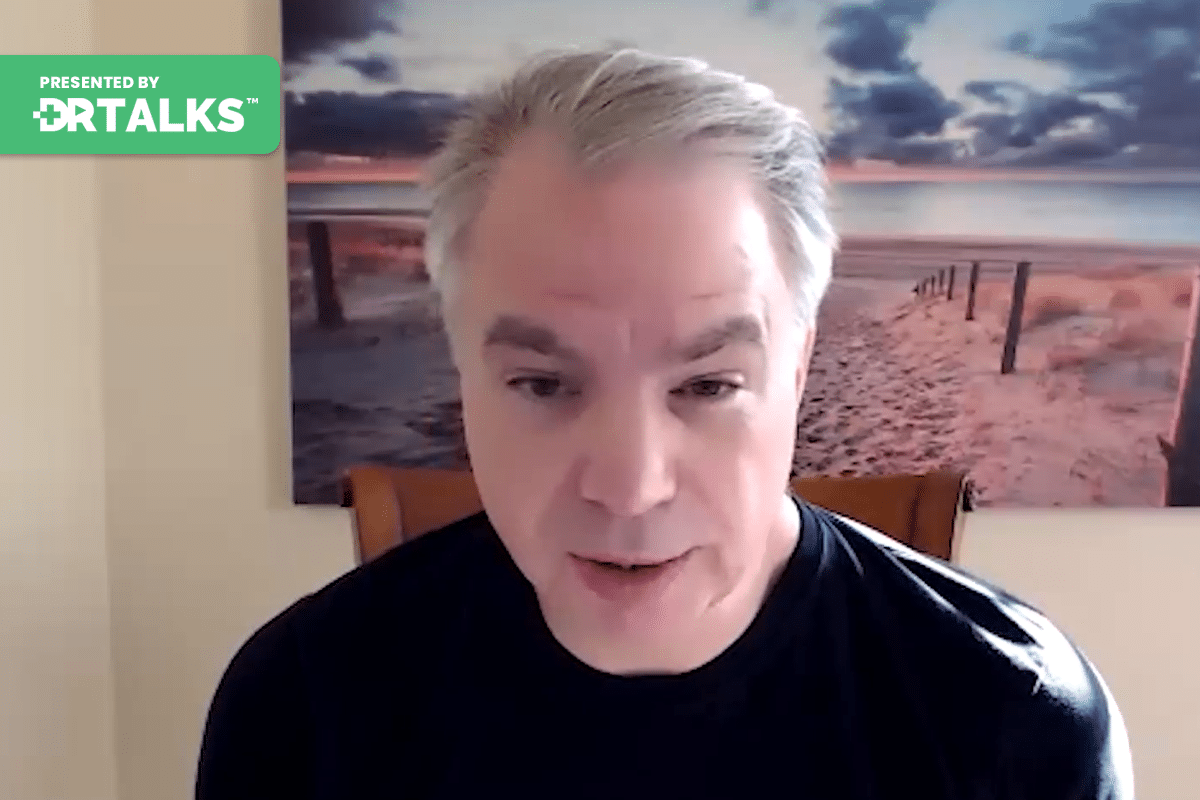

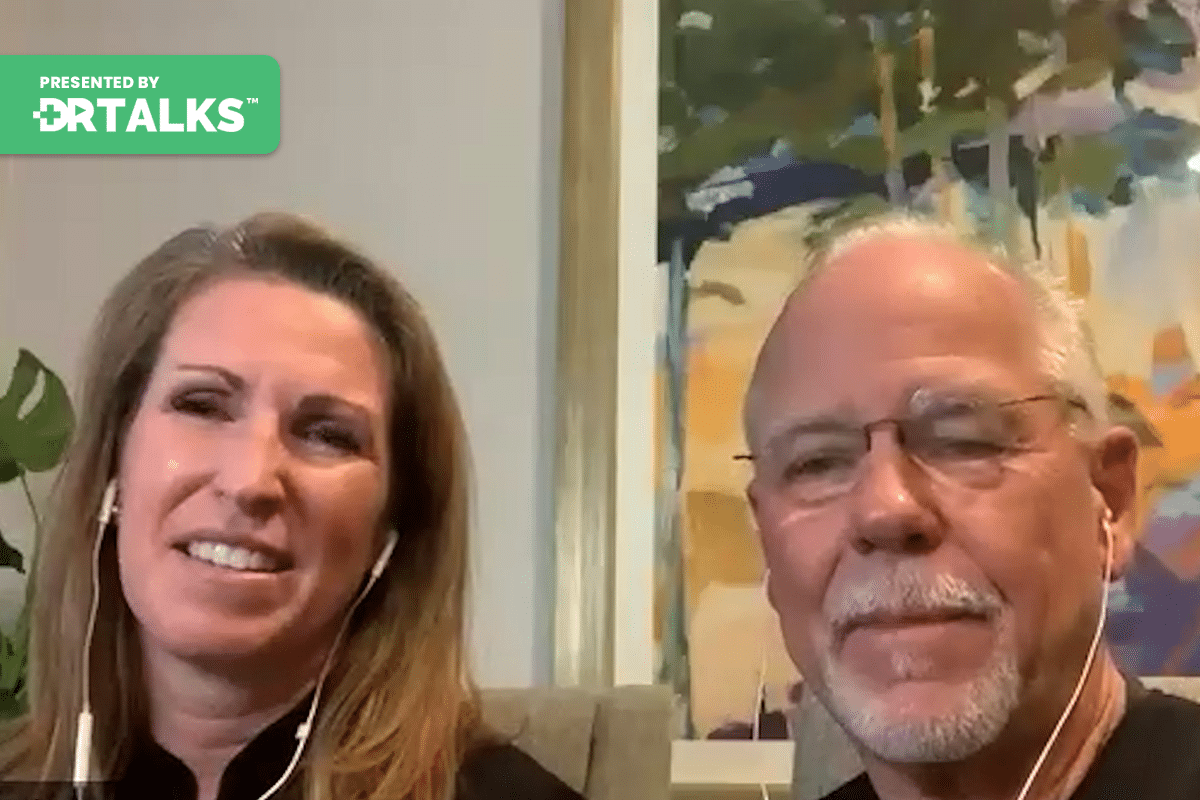

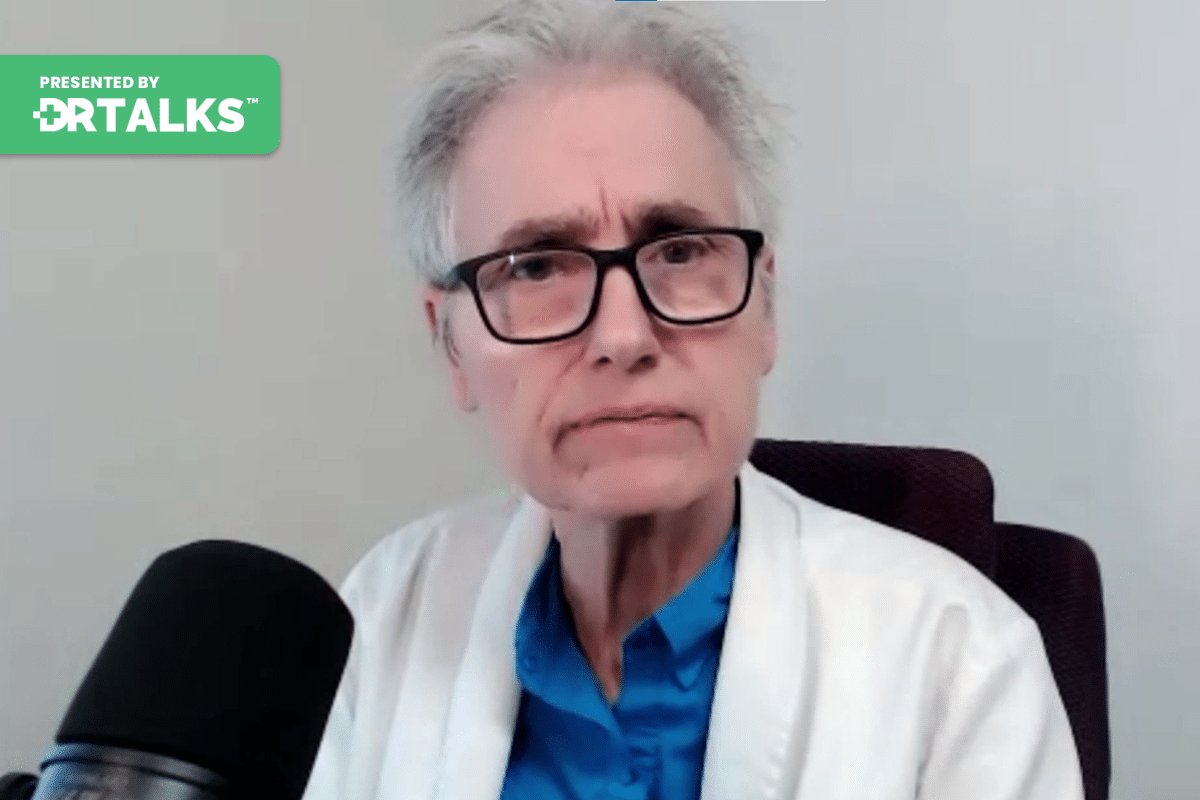
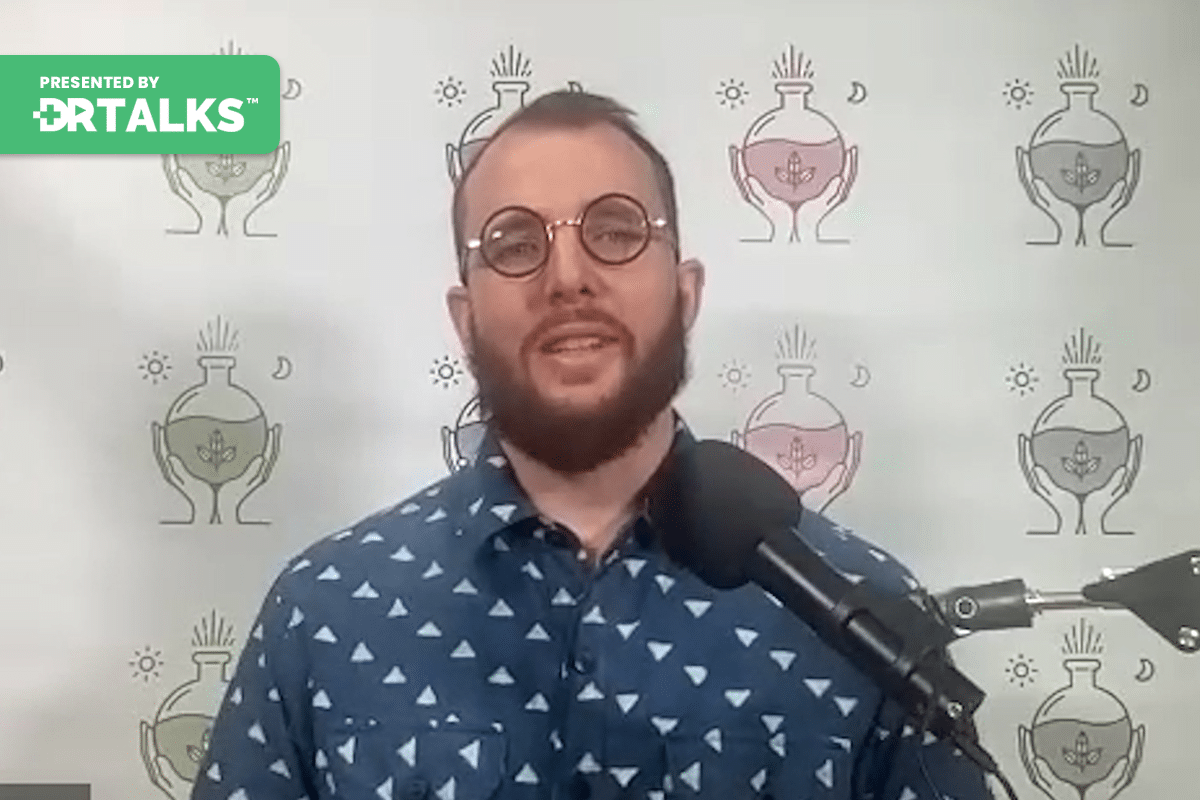

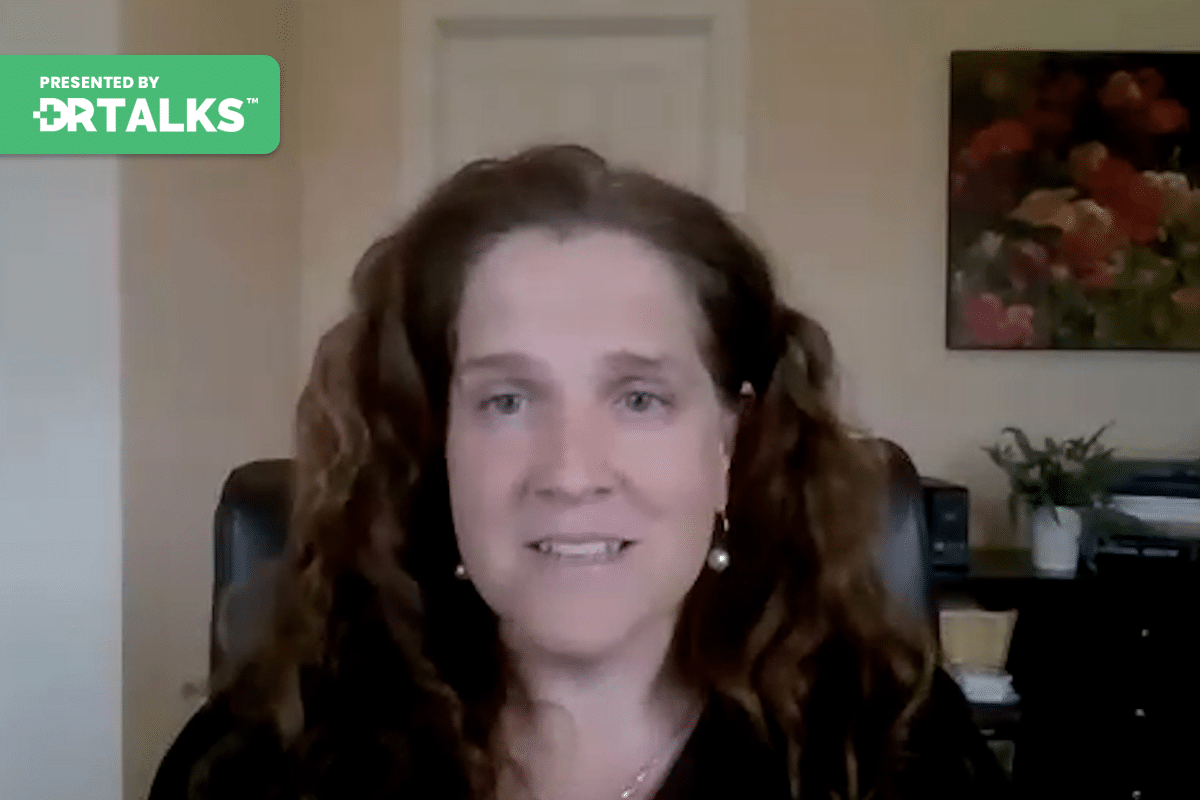

Dr. Dayan Goodenowe’s insights on MS and its link to mitochondrial insufficiency provide a fresh and nuanced perspective on the disease, shifting the focus from myelin damage to the foundational role of mitochondria and the importance of cellular health.
By detailing the biochemistry of MS, including the critical role of oleic acid and the potential for re-myelination through dietary and supplemental interventions, this discussion offers hope and actionable strategies for individuals living with MS.
The conversation between Dr. Terry Wahls and Dr. Goodenowe not only illuminates the complex mechanisms underlying MS but also underscores the potential for nutritional science to play a significant role in managing and possibly mitigating the disease’s progression.
This deep dive into the molecular basis of MS and the emphasis on mitochondrial support through specific nutrients opens up new avenues for research and therapy.
What are your thoughts on the potential of dietary and supplemental interventions in managing autoimmune diseases like MS?